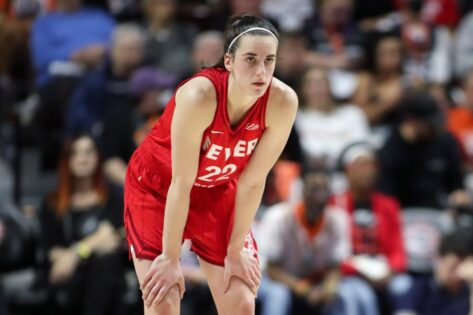Sunday’s loss was just the type of demoralizing defeat that has haunted the New York Mets so far this season. This time, it was a 6-7 gut-punch against the Milwaukee Brewers. It was their seventh straight defeat, and they are now trailing 5.5 games behind the Phillies for the NL East lead. Their recent collapse now seems like a daily dose of misery. And this tale doesn’t begin with Sunday’s collapse. It starts weeks earlier, with a crucial decision that sets the stage for this very disaster.
Now, let’s take it back to the trade deadline on July 31. Mets President of Baseball Operations David Stearns assessed his club’s needs. He went down a certain avenue and put the starters in the back seat while prioritizing relief pitching over starting rotation help. “There are multiple ways to build a pitching staff,” Stearns confidently said. “We focused on the back end…the bullpen.” He also questioned the market for top arms. High-ranking executives wondered if an ace-caliber starter would even be available. Was the market seriously that empty?
We’ll revisit that. But first, let’s dissect the wreckage of the present.
Everything went wrong in the August 10 game against Milwaukee. The Mets seemed to be recovering from their recent slump during the first 4 innings. They even claimed a 5-0 lead over a strong Brewers team. But then everything went wrong. Sean Manaea, the starting pitcher, began to leak runs during the 4th inning. He also gave up a second damaging homer to Contreras in the 5th. The Mets had a comfortable lead, but at the end of the 5 innings, it was just a fragile 6-5 advantage. The rest of the bullpen was equally helpless to stop the surge, with prized acquisition Ryan Helsley conceding the tying run and closer Edwin “Sugar” Diaz surrendering the walk-off run.
After the game, Carlos Mendoza was very frustrated, which was evident in his press conference. He didn’t make excuses; he went after it publicly. The manager put the blame on the starting pitchers and the heavy use of the key relievers. “We saw Rogers third days in a row like we’re asking a lot of the bullpen, and we opened with Garrett, and before you know, he’s pitching in the fifth inning. Uh, Raley went two-ups on Friday, he’s not available yesterday, and then we’re asking him to pitch a full inning today,” Mendoza said. Then came the line that echoed through the organization. “You know, we got to get our starters going.”
If you thought Mendoza was overreacting to one bad game, then you were wrong. Starters have been unable to get deep into games in almost every game since the All-Star break. A log of Mets starts since mid-July paints a damning picture. Frankie Montas went three innings on Aug. 9, Senga 4.1 innings on Aug. 8, and Clay Holmes was limited to five innings on Aug. 6. Only five times has a Mets starter pitched longer than 6 full innings in their 21 starts since the All-Star break. And on ten of those times, the starter could not even pitch five innings.
That endless string of failures has turned the bullpen from a luxury into a nightly necessity, a cycle that has reached its boiling point.
A crisis of construction: The bullpen and the rotation
The centerpiece of the New York Mets’ plan for dominance was their bullpen. Stearns bolstered it with deals for Gregory Soto, Tyler Rogers, and Ryan Helsley. That “super-bullpen” was constructed with the intent of limiting games and locking down victories. Instead, they have been depleted, filling in for the rotation’s deficiencies. Mendoza is put in impossible positions to use pitchers on back-to-back days out of necessity. He knows he is wearing out his best assets, but his starters are leaving him no other option.
The team is dealing with a set of serious problems within its core five starters. Staff ace Kodai Senga is having issues out of the gate since his return from injury. He has put up a 6.18 ERA over his last four starts. Sean Manaea has repeatedly failed. In his last start against the Cleveland Guardians on August 4, he did not do well at all, giving up five runs on seven hits in just 5.2 innings. Over the last six starts, his ERA sits at 4.33.
The problems continue down the line. Frankie Montas has emerged as the rotation’s most substantial problem starter with a 6.38 ERA. Clay Holmes is managing a career-high workload for himself as a former reliever. He has been noticeably tired and has failed to pitch beyond the fifth inning since June 7. The lone bright spot has been David Peterson. He has become the most dependable member of the rotation and has been logging over six innings per outing.
Now, let’s return to Stearns’ trade deadline logic. Was the market for starting pitchers truly nonexistent? The evidence suggests otherwise. The Texas Rangers obtained a solid starter in Merrill Kelly. The Toronto Blue Jays picked up former Cy Young winner Shane Bieber. Additional pitchers such as Charlie Morton and JP Sears also changed teams. Top pitchers like Joe Ryan and Sandy Alcantara were available at a reasonable price. The Mets stood pat, a decision that now looks like a monumental blunder in planning and strategy.
The post David Stearns’ Trade Deadline Failure Haunts Mets as Carlos Mendoza Sends Wake-Up Call After Collapse appeared first on EssentiallySports.



